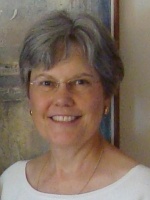Certified mediator at Fairfield Center, Harrisonburg, VA
I was the “city cousin” and the preacher’s kid in a small town with two traffic lights. Derived status had its benefits, and learning new things came with language included.
As I moved to wider streets in real cities among diverse peoples who ignored preachers’ kids as a peculiar elitism, I found language a problem. When I walk up wide porch steps to the front door of a large house, cross the threshold and find my feet on a dirt floor instead of carpet, what do I say? The beautiful woman on the sofa is barely able to rise from her attributed hangover to talk to me, or to the policewoman who delivers the message that her children can no longer stay in her home.
Across the street in front of the neighborhood bar, the local unemployed – again, attributed – stand and watch us. We had arrived in an unmarked police car and that communicated our perspective. The woman’s face took up residence in my developing Weltanschauung and in eloquent silence, demanded something more.
My graduate degree in social work came with fix-it language that worked, more or less, depending on the degree of client involvement in the solution. I worked hard to learn better Communication Skills, but clients rarely followed the script-of-the-moment when I voiced the recommended cues.
I began mediation training after an introduction to it in Bangladesh at the turn of the century, and that process did not come with substantial language attached. To remedy this, I began formal study about conflict resolution at CJP. I learned how conflicts evolve tentacles that wrap interlocutors in positions that shape the conversation to save face.
In order to be in a conflict resolution track, I needed to learn the language of negotiation and collaboration. First, I had to change my mode of response to conflict. In more than one CJP class, I learned my first response was to accommodate or avoid conflict. While today I am deeply grateful for this information, I was not happy to learn it at the time. I became acquainted with a conversational paradigm created by a team of lawyers that makes room for integrity of expression by all relevant voices. There is no script. The dialogical flow depends on accurate analysis of the language used by the interlocutors.
What I learned as a result of my work at CJP was that conversational approaches to conflict resolution require vulnerability to maintain impartiality, and a commitment to uncertainty that keeps my desire to control within objective limits. This ambiance in the negotiation space allows interlocutors to talk about perspectives and values and find face again or even better, not lose face in the first place. As one of the certified mediators at the Fairfield Center in Harrisonburg, VA, I work to move conversations from positional input to negotiations about common understandings. I am grateful to CJP faculty and curriculum for the intellectual space to coalesce strands of earlier learning and experiences into a viable conversational approach to conflict resolution.
(updated Jan., 2011)
